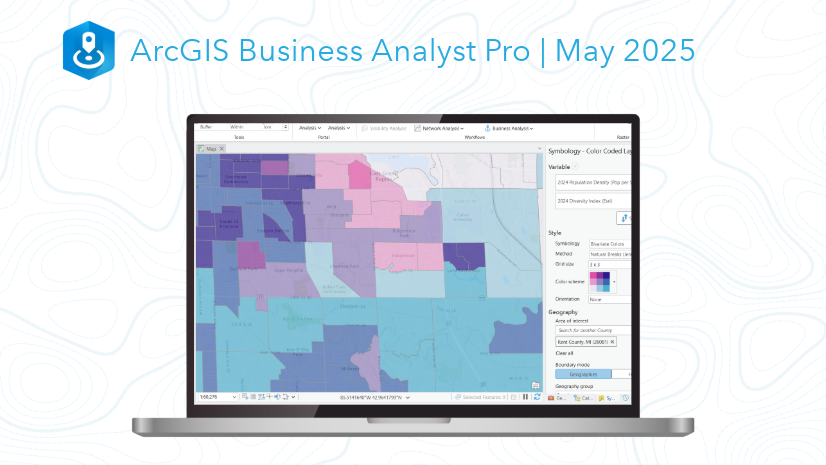Why Teach with GIS?
August 26, 2022 2022-08-29 11:42Why Teach with GIS?
Why Teach with GIS?
GIS is more than just a collection of maps; it uses technology to reveal trends, correlations, and patterns. People can make smarter decisions, come up with innovative solutions, and take meaningful action while using GIS. The purpose of teaching with GIS is not just to make maps, but the intention is to promote understanding and perspective.
GIS technology has played a significant role in exploration, invention, and global knowledge for many years. It produces spectacular visualizations and has established itself as a crucial tool for problem-solving and well-informed decision-making by integrating real-time data, potent analytical tools, interactive maps, field gathering tools, an API, and applications.
As the world struggles with complicated issues such as famine, drought, population growth and COVID-19, higher education institutions must keep coming up with innovative methods to equip students to be future leaders and problem solvers.
Embracing GIS as a teaching tool can help get the next generation ready for a more complicated environment. GIS will help students comprehend the benefit of using geography to understand the world. Instructors who use GIS technology as a teaching tool will help students interact with the material better and develop important skills including spatial thinking, global awareness, flexibility, communication, and technical proficiency.
Benefits of using GIS as a teaching tool
The benefits of using GIS as a teaching tool include:
- Increases data fluency and field experience
Students can gain fluency in the GIS environment by being exposed to a variety of data kinds, sizes, and themes that promote lifelong learning. Additionally, fluency can only improve with practice. Going outside gives students the opportunity to develop and create field surveys, collect field data, and map findings while also fostering an earth ethic about places and people and helping them grasp how the world is changing.
- Enhances scientific and geographic inquiry skills
GIS has always been primarily a tool for thinking. Students are inspired to create insightful questions by an excellent map that cut across disciplinary, geographic, and political scales.
- Adds expertise in the subject of study and helps in identification of potential career paths
Business, data science, energy, engineering, health care, urban planning, natural resources, transportation, and social science are just a few of the industries that GIS is quickly expanding into. Students can spot gaps in their knowledge and expertise as they investigate issues in these disciplines. Students will be encouraged to pursue potential career choices that interest them at the same time.
- Encourages students to become community leaders and change agents
Students can gain a comprehensive awareness of local and social concerns by being taught with GIS. They become positive change agents on their campuses, in their jobs, and in their communities as they investigate the wider picture and develop confidence in their understanding of the world. Their knowledge of GIS can help individuals around them overcome obstacles and solve problems in the real world.
- Encourages more analytical thinking when tackling problems.
When students use GIS, they take place and space into account; they think regionally and spatially about problems and possible solutions. This entails considering several cycles, such as the hydrologic or carbon cycles. They consider how the lithosphere, biosphere, cryosphere, hydrosphere, atmosphere, and anthroposphere interact with one another. By doing this, students are engaging in critical thinking and thoughtfully evaluating the sources of the data, the dates, the authors, and the scale, as well as the symbology and analytical tools they choose. When GIS is used in real-world contexts, problem-based learning (PBL) is enriched; students learn how to frame, visualize, and wrestle with issues to consider potential outcomes and develop solutions.
If you’re interested in setting your students towards the right direction with this digital mapping technology, you can purchase ArcGIS products online. Click here https://ea-store.esri.com/en-ke/store/overview.







